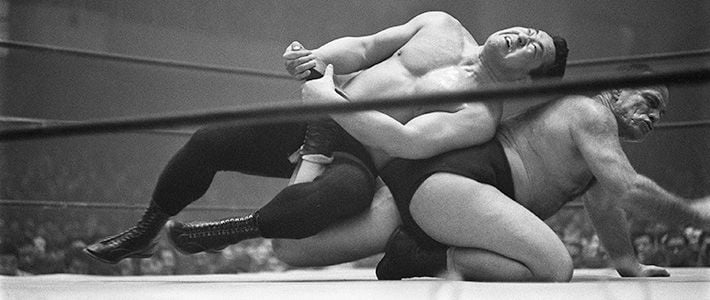No products in the cart.
The History of Pro Wrestling in Japan: From Sensational Pioneers to Global Phenomenon
Introduction: The Rise of Pro Wrestling in Japan
Pro wrestling in Japan boasts a long and storied history, marked by exciting matches, legendary rivalries, and unforgettable characters. From its modest origins to its rise as a worldwide sensation, the growth of pro wrestling in Japan highlights its lasting appeal and cultural impact.
Early Beginnings: Influences and Pioneers
Pro wrestling first gained traction in Japan during the early 20th century, influenced by American and European wrestling styles. In the 1950s, Rikidōzan emerged as a pioneer of Japanese pro wrestling, captivating audiences with his charismatic presence and technical prowess. His rivalry with Masahiko Kimura drew massive crowds and laid the foundation for pro wrestling’s growth in Japan.
Global Expansion: All Japan Pro Wrestling and Beyond
During the same period, All Japan Pro Wrestling (AJPW) emerged as a formidable competitor to NJPW, led by legends like Giant Baba and Mitsuharu Misawa. AJPW’s innovative approach to storytelling and emphasis on in-ring action attracted international attention, paving the way for the global expansion of Japanese pro wrestling. Wrestlers like The Great Muta and Genichiro Tenryu became household names worldwide, showcasing the diversity and depth of talent in Japan’s wrestling scene.
New Horizons: Diversification and Innovation
In the 21st century, Japanese pro wrestling continued to evolve, embracing new styles and innovations to stay relevant in an ever-changing landscape. Promotions like Pro Wrestling Noah and Dramatic Dream Team (DDT) introduced unique concepts and characters, pushing the boundaries of traditional wrestling conventions. The emergence of stars like Kazuchika Okada and Kenny Omega further elevated Japan’s status as a hotbed for pro wrestling talent, attracting global audiences and acclaim.
Cultural Impact: Pro Wrestling in Japanese Society
Beyond the ring, pro wrestling has left an indelible mark on Japanese society, influencing pop culture, fashion, and entertainment. Wrestlers like Riki Choshu and Atsushi Onita became cultural icons, their larger-than-life personas resonating with audiences of all ages. Pro wrestling events, known as “puroresu,” continue to draw passionate fans from across Japan and around the world, fostering a sense of community and camaraderie among enthusiasts.
Challenges and Resilience: Navigating Adversity
Despite its enduring popularity, Japanese pro wrestling has faced its share of challenges, including changing audience demographics and competition from other forms of entertainment. However, the resilience of promotions like NJPW and AJPW, coupled with the innovation of newer organizations, has ensured the continued growth and relevance of pro wrestling in Japan. Adapting to the times while staying true to its roots, Japanese pro wrestling remains a cultural touchstone beloved by millions.
Looking Ahead: The Future of Pro Wrestling in Japan
Looking ahead, the legacy of pro wrestling in Japan remains a powerful source of inspiration for both fans and athletes. As new talent emerges and digital platforms expand, Japanese pro wrestling is set to achieve even greater success internationally. Whether performed in the renowned arenas of Tokyo or smaller, local venues, the essence of Japanese pro wrestling endures, ensuring that fans will continue to enjoy exhilarating matches and memorable moments for years to come.
Conclusion: Celebrating a Storied Tradition
In summary, the evolution of pro wrestling in Japan highlights the fervor, commitment, and creativity of its athletes and promoters. Starting from modest beginnings, Japanese pro wrestling has grown into a global sensation, captivating audiences around the world and leaving a lasting impact on popular culture. As we honor this rich tradition, let’s keep supporting and valuing the enduring legacy of Japanese pro wrestling for future generations.










